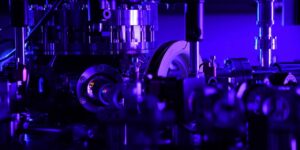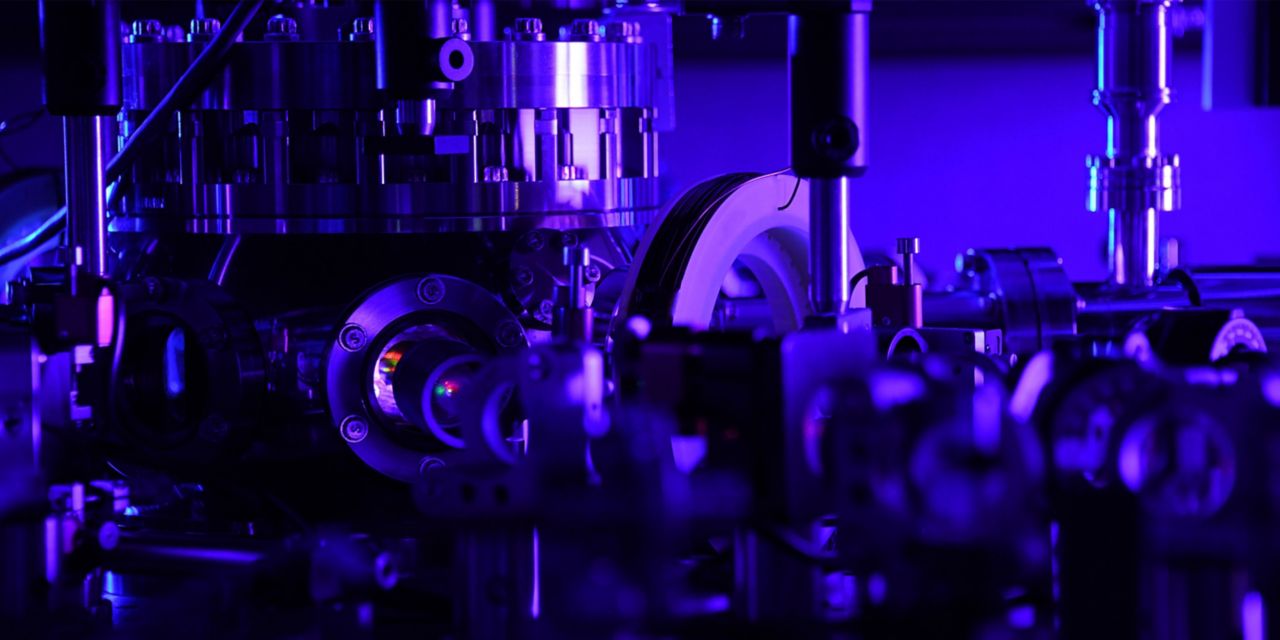
Researchers at Honeywell Quantum Solutions and the University of Texas – Austin developed an algorithm that could lead to quantum computers running more complex scientific simulations sooner than expected, the research team reported in a Honeywell news story.
The Honeywell team recently demonstrated that its holographic quantum dynamics (holoQUADS) algorithm accurately simulated a quantum dynamics model with fewer qubits than traditional methods. The algorithm used nine qubits to simulate 32 “spins” – or localized electrons. Traditional methods require one qubit per spin.
The demonstration, led by Eli Chertkov, has important implications. Simulating quantum dynamics is a promising application for quantum computers. However, many predict quantum computers will need hundreds or thousands of qubits to perform calculations of practical relevance.
The holoQUADS algorithm could change that.

“This algorithm enables us to run more complex simulations with far fewer qubits,” said Tony Uttley, president of Honeywell Quantum Solutions. “This is an exciting achievement that gets us closer to quantum computers solving real-world problems that classical computers cannot.”
Borrowed from the classical world
Scientists have long sought to better understand how atoms and subatomic particles move, behave, and interact (known as quantum mechanics) and react when disturbed (quantum dynamics).
Such knowledge is critical to the development of new vaccines and gene therapies, and the discovery of novel materials that are stronger, longer lasting, or better conductors of heat or electricity.
Currently, it is impossible to fully simulate the quantum dynamics of systems larger than a few atoms, and many believe it always will be. Classical computers crunch data by manipulating ones and zeroes and represent states as “off” or “on.” Atoms and subatomic particle exist in multiple states and move and behave in different ways.
This is what led to famed American physicist Richard Feynman postulating in the 1980s that only computers that are quantum in nature can adequately simulate quantum dynamics.
That is not to say computational scientists do not have tricks to model some aspects of quantum dynamics on classical computers. They have developed powerful algorithms such as tensor networks to approximate quantum states.
In fact, the holoQUADS algorithm is based on tensor networks. These mathematical tools compress data and scientists use them to study the quantum nature of different materials.
The Honeywell team published a paper last May detailing the steps necessary to adapt tensor networks for a quantum computer and how to extend them to simulate dynamics. They published a second paper explaining how quantum tensor networks can measure the degree to which parts of a system are entangled, or entanglement entropy, which is used for studying topological properties of materials.
The recent demonstration showed the dynamics algorithm described in the original paper is not only efficient but can return quantitatively accurate results with trapped-ion hardware available right now.
Tested and verified
The Honeywell team tested the algorithm by simulating the chaotic dynamics of the “kicked” Ising model, a mathematical framework used to study chaos and thermalization in strongly interacting quantum systems. The results mirrored those generated by simulations on classical computers.
The demonstration served as an important benchmark and will help the team verify performance and accuracy as they scale the algorithm and quantum hardware.
“The model we simulated is a perfect test of the algorithm because it behaves in many ways like a typical chaotic quantum system, but it has a very special feature that lets us check the results classically,” said Dr. Michael Foss-Feig, a physicist who helped develop the algorithm.
Chertkov, Foss-Feig, and the other co-authors are excited by how well the algorithm worked in the real world, and by the performance of the System Model H1.
“The QCCD architecture at the heart of System Model H1 enables high fidelity qubit reset and mid-circuit measurements with very low crosstalk errors,” said Justin Bohnet, one of the co-authors who led the hardware team. “Those features, along with the long coherence times and high-fidelity gates provided by trapped-ion qubits, are enabling creative advances in the study of quantum systems, as shown by this holoQUADS demonstration.”
Source: Honeywell
If you found this article to be informative, you can explore more current quantum news here, exclusives, interviews, and podcasts.


















